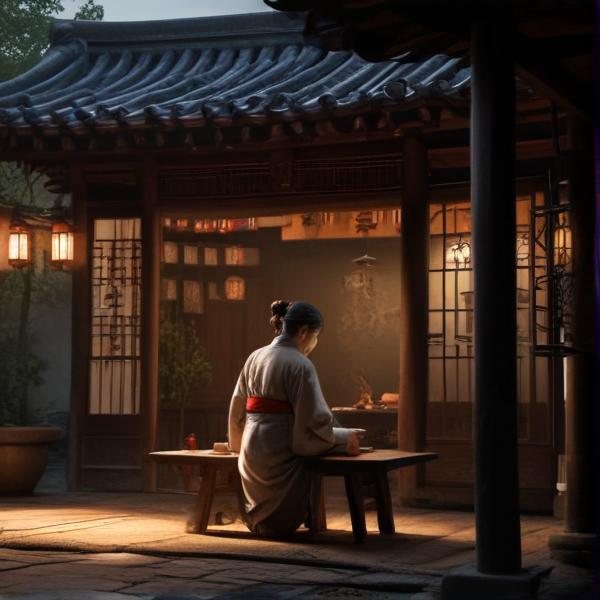基本信息 (Basic Information)
含义与用法 (Meanings & Usage)
中文核心释义 (Core Chinese Meaning): 用肉、菜等煮成的浓汤或羹类食物
英文核心释义 (Core English Meaning): thick soup, stew (usually meat or vegetable-based)
象形意义 / 为何这么写 (Pictographic Meaning / Writing Rationale)
文言文释义 (Classical Chinese Meaning)
古义与现代意义相近,泛指用肉或菜熬煮成的浓汤。Similar to modern meaning, generally refers to thick soups or stews made from meat or vegetables.
深入学习 (In-depth Study)
字源故事 (Origin Story)
字形演变 (Character Evolution)
常用词语和例句 (Common Words & Examples)
鸡蛋羹 (steamed egg custard)
我妈妈做的鸡蛋羹非常细腻好吃。
Eng: The steamed egg custard my mom makes is very smooth and delicious.
鱼羹 (fish thick soup)
这家餐馆的鱼羹非常有名。
Eng: The fish soup at this restaurant is very famous.
羹汤 (stew or thick soup)
古代宴席上常有各种羹汤。
Eng: Banquets in ancient times often featured various stews and soups.
相关成语 (Related Idioms)
分一杯羹
Meaning: to take a share of the profits or spoils
多语言翻译 (核心释义) (Translations (Core Meaning))
- French: potage épais, ragoût
- German: dicke Suppe, Eintopf
- Spanish: sopa espesa, guiso
- Italian: zuppa densa, stufato
- Portuguese: sopa espessa, guisado
- Russian: густой суп, рагу
- Arabic: حساء كثيف، يخنة
- Persian: سوپ غلیظ، خورشت
- Dutch: dikke soep, stoofpot
- Polish: gęsta zupa, gulasz
- Vietnamese: súp đặc, món hầm
- Ukrainian: густий суп, рагу
视频学习资源 (Video Learning Resources)
通过以下链接在热门视频网站搜索 "羹" 的更多讲解:
Search for more explanations of "羹" on popular video sites:
- 在 Bilibili.com 搜索 "羹 字源 说文解字" (Search on Bilibili)
- 在 YouTube.com 搜索 "羹 character origin etymology" (Search on YouTube)
网络参考 (Web References for "羹") ()
网络内容摘要 (Web Content Summary):
羹(拼音:gēng)是一级常用汉字,基本含义为以肉类或蔬菜烹饪成的浓稠带汁的食品,常译为“thick soup”或“stew”。 羹 (pinyin: gēng) is a frequently used Chinese character mainly referring to a thick, savory soup or stew made from meat or vegetables.
- 象形起源:“羹”字的古文字形是由“羔”(小羊)和“鬲”(古代带蒸汽的炊具)组成,象征羊肉在锅中炖煮,蒸汽蒸腾,表示将肉煮熟成羹。 Pictographic Origin: The character is composed of symbols for “young lamb” and an ancient steamer pot, visually depicting the process of cooking lamb to make a thick soup.
- 文化背景:在古代中国,羹多指肉羹,是贵重的食物,常用于宴飨和礼仪中。 Cultural Background: In ancient China, meat-based “羹” was considered a delicacy for banquets and ceremonies.
- 常见用法与成语:“羹”最常见的搭配词语有:“鱼羹”、“肉羹”。“分一杯羹”意为“分一份利益”。 Common Phrases & Idioms: Phrases like “鱼羹” (fish stew), “肉羹” (meat stew) are common. The idiom “分一杯羹” means to share in the benefits or profits.
- 易混淆点:需注意“羹”和普通“汤”不同,羹一般较为浓稠。 Easily Confused: “羹” is thicker than regular “汤” (soup)—they are not interchangeable.
简要总结:“羹”不仅是一种食物,还是中国饮食文化的代表字之一,常见于成语和历史典故,学习时应注意其浓稠的食物属性和比喻意义。 Summary: The character “羹” represents not just a food but a significant aspect of Chinese culinary culture, often appearing in idioms and historical references. Note its thick consistency and metaphorical uses when learning.
羹(汉语文字)_百度百科
羹(拼音:gēng),汉语一级通用规范汉字(常用字)。此字最古形体为《说文解字》中的小篆,古字形由𩰲(lì,冒热气的炊具)和羔(小羊)组成,"羹"的本义应是"以羊肉做成的带汁的食品",引申指各种肉类或蔬菜做成的带汁的食品。中古以后,"羹"由带汁食物引申为浓稠的汤。
羹字形演变字源_汉字「羹」_羹的甲骨文_羹的金文_金文编_甲骨文编
此字始見於戰國文字,從羔、從美,與篆文構形相同。《說文》「羹」本作「?」,從䰜、羔聲,「䰜」為「鬲」之古文,鬲是陶製炊具,兩邊加「弓」形,像蒸氣升騰之形,表示「五味之氣上出」。會合為經烹飪已熟的肉食,五味氣出,為異文會意。
更多图片 (羹 More Images) ()
